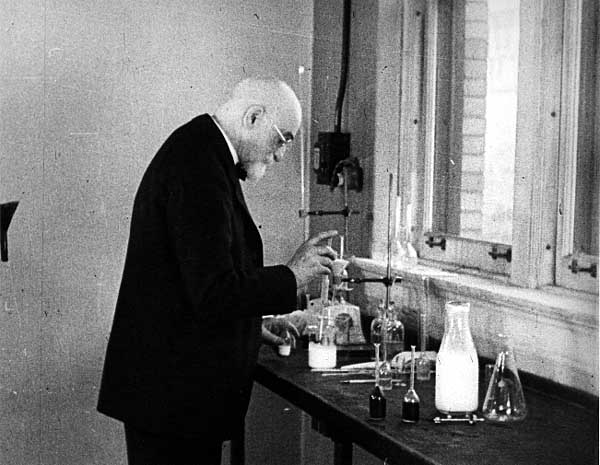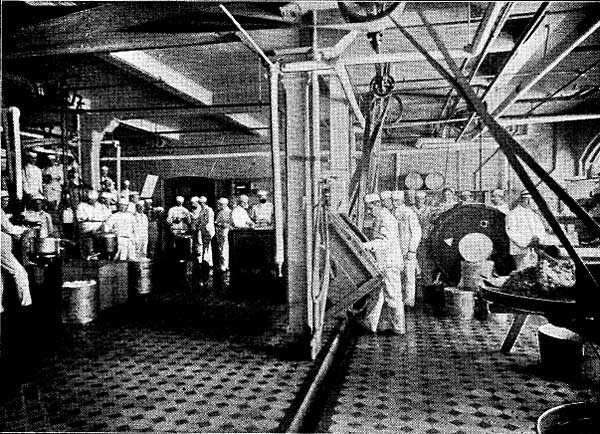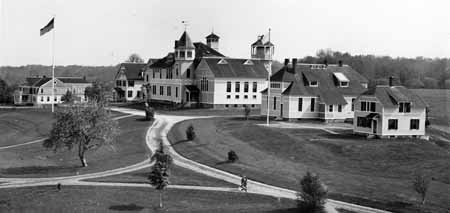Cheese Crystals Through the Years
A BRIEF HISTORY OF THEIR RISE TO PROMINENCE
You can scroll slowly to see some of the early work conducted on cheese crystals. If you prefer, you can download the narrative form of the history.

1901
Stephen Babcock (pictured) and Harry Russell, researchers at Wisconsin’s Agriculture Experiment Station, mentioned "white specks" occurring in cheddar cheese throughout some of the cold storage facilities in Wisconsin. These were mostly likely calcium lactate crystals. You can read their findings here. Image credit: Babcock working on his butterfat test at University of Wisconsin.

1902
Babcock and other researchers conducted a series of experiments to determine the cause of the "white specks". They concluded that cooler temperatures and low salt concentration caused more of these specks (i.e. crystals). Here is the write up of their experiments. Image credit: UW Creamery at University of Wisconsin.

1909
L.L. Van Slyke, at New York State's Agricultural Experiment Station, publishes a book: The Science and Practice of Cheese Making. The book references chemical analysis performed on "white specks" from cheddar cheese. They determined calcium was present, and assumed fat was another major component. This lead to them being known as "calcium soaps". Image credit: students making cheese at the NYS Ag Station - Cornell University.

1910
By 1910, these "white specks" (i.e. calcium lactate crystals) were known in the dairy industry. In trade publications, they were often listed as a defect. Image credit: "Cheese Defects" article in the New York Produce Review and American Creamery, a popular trade journal of the era.

1911
Arthur Dox, of University of Connecticut’s Storrs Agricultural Experiment Station, claimed he found the first occurrence of tyrosine crystals in cheese; he noted white crystalline entities in Roquefort bleu cheese. Image credit: Storrs campus in 1899 - University of Connecticut.

1920s
Professor Otakar Laxa (pictured), of the University of Chemical Technology in Prague, conducted extensive microscopic studies of cheese that included many mentions and sketches of crystals. Laxa noted the presence of leucine, tyrosine, and lactate of lime (calcium lactate) across many different cheese varieties; crystals appeared to be endemic in alpine-style cheeses, grana-style cheeses, blue cheeses, and others. Pictured are a few of his sketches. Image credit

1930
H. H. Sommer of the University of Wisconsin captured micrographs of calcium tartrate crystals in processed cheese (pictured). He concluded this was the cause of sandiness in processed cheese, a common defect of the period. Image credit
